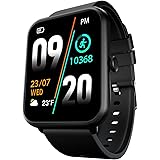Extended reality (XR) refers to a range of immersive technologies that blend the physical and digital worlds. It encompasses virtual reality (VR), augmented reality (AR), and mixed reality (MR) to create a fully immersive and interactive experience for the user. XR is used in a variety of applications, from entertainment and gaming to education, training, and healthcare.
How AR, VR, and MR are different from each other.
Augmented Reality (AR), Virtual Reality (VR), and Mixed Reality (MR) are different technologies that use digital devices to create immersive experiences.
Augmented Reality (AR) involves adding digital information to the real world, typically using a device such as a smartphone or a tablet. A common example of AR is a smartphone app that displays information about a location or object when you point the camera at it. For example, a museum app might use AR to display information about exhibits when you point your phone at them.
Virtual Reality (VR) creates a completely artificial environment that replaces the real world. VR is typically experienced through a headset that covers the eyes and includes sensors for tracking head and hand movements. An example of VR is a video game that takes you to a completely different world, where you can interact with objects and other players in real time.
Mixed Reality (MR) is a hybrid of AR and VR, blending the real world with virtual elements. MR typically involves using a headset that allows you to see the real world while also adding digital elements, such as holograms. For example, an MR app might allow you to see virtual furniture in your living room, and place it in different locations to see how it would look.
In summary, AR adds digital information to the real world, VR replaces the real world with a digital environment, and MR blends the real and digital worlds to create a hybrid environment.
What role do AR, VR, and MR have in the Metaverse
AR, VR, and MR are often considered building blocks of the metaverse, a term used to describe a shared virtual space where users can interact with each other and with virtual objects in real time. The metaverse can be thought of as a persistent, interconnected world that exists both in the physical and digital realms.
While AR, VR, and MR all play a role in the metaverse, they each have distinct characteristics and applications. AR, for example, allows for the integration of digital information with the real world, while VR creates a fully-immersive digital environment. MR, on the other hand, combines AR and VR to create a hybrid environment that blends physical and digital elements.
The metaverse, on the other hand, represents a more comprehensive and integrated vision of immersive technology, one that encompasses all of these technologies and more. It is often described as a shared virtual space that can be accessed by users from anywhere in the world, where they can interact with each other and with virtual objects in real time.
Use Cases of AR (Augmented Reality)
Following are just a few examples of the many potential use cases for AR, VR, and MR. These technologies are constantly evolving and new applications are being developed all the time.
Augmented Reality (AR) has a wide range of applications across various industries and domains. Some of the most common use cases of AR include:
- Retail and E-commerce: AR is being used by retailers to create interactive shopping experiences for customers, allowing them to see how products will look in their homes before making a purchase.
- Gaming: AR games, such as Pokémon Go, have become hugely popular, offering players the chance to experience a new form of gaming that combines the physical and digital worlds.
- Education and Training: AR is being used in education to create interactive learning experiences, allowing students to visualize and interact with complex concepts in real time.
- Healthcare: AR is being used in healthcare to enhance patient experiences, providing information and visual aids during medical procedures, and help healthcare professionals visualize anatomy and medical imaging.
- Manufacturing and Industrial Design: AR is being used in manufacturing and industrial design to help designers visualize prototypes and simulate production processes, saving time and reducing costs.
- Advertising and Marketing: AR is being used in advertising and marketing to create interactive and engaging experiences for customers, bringing product advertisements to life.
Use cases of Virtual Reality (VR)
VR (Virtual Reality) finds extensive applications in a diverse range of industries and domains. Some frequently observed use cases of VR comprise:
- Gaming: VR has revolutionized the gaming industry, allowing players to fully immerse themselves in virtual environments and interact with them in real time.
- Healthcare: VR is being used in healthcare for a variety of purposes, including pain management, rehabilitation, and training for medical procedures.
- Education and Training: VR is being used in education and training to create immersive and interactive learning experiences, allowing students and trainees to practice skills in simulated environments.
- Manufacturing and Industrial Design: VR is being used in manufacturing and industrial design to create virtual prototypes and simulate production processes, reducing the need for physical prototypes and saving time and costs.
- Tourism and Travel: VR is being used in tourism and travel to allow users to experience virtual tours of destinations, hotels, and other tourist attractions.
- Entertainment: VR is being used in the entertainment industry to create immersive experiences, such as virtual concerts and theatrical performances.
Use cases of Mixed Reality (MR)
MR (Mixed Reality) is widely utilized in various industries and domains, with a broad range of applications. Some of the prevalent use cases of MR include:
- Manufacturing and Industrial Design: MR is being used in manufacturing and industrial design to create virtual prototypes and simulate production processes, reducing the need for physical prototypes and saving time and costs.
- Education and Training: MR is being used in education and training to create immersive and interactive learning experiences, allowing students and trainees to practice skills in real-world and simulated environments.
- Healthcare: MR is being used in healthcare to enhance patient experiences, provide information and visual aids during medical procedures, and help healthcare professionals visualize anatomy and medical imaging.
- Retail and E-commerce: MR is being used by retailers to create interactive shopping experiences for customers, allowing them to see how products will look in their homes before making a purchase.
- Military and Defense: MR is being used in military and defense to enhance training and simulation, allowing soldiers and officers to practice in realistic environments.
- Architecture and Construction: MR is being used in architecture and construction to visualize and interact with building designs and plans, reducing the need for physical mockups and saving time and costs.
Technologies used in AR, VR, and MR
Augmented Reality (AR), Virtual Reality (VR), and Mixed Reality (MR) is enabled by a range of technologies that work together to create immersive experiences. Some of the key technologies used in these fields include:
- Head-mounted Displays (HMDs): HMDs, such as VR headsets and MR headsets, are devices that cover the eyes and display digital content, creating a sense of immersion.
- Tracking Sensors: Tracking sensors, such as accelerometers, gyroscopes, and magnetic sensors, are used to track the position and orientation of a user’s head and hands, allowing for accurate interaction with the digital environment.
- Computer Vision: Computer vision technologies, such as image recognition and object tracking, are used in AR to detect and track real-world objects, allowing for the overlay of digital information.
- Graphics Processing Units (GPUs): GPUs are specialized processors used to generate high-quality graphics in real time, creating a seamless and immersive experience for the user.
- 3D Modelling: 3D modeling technologies are used to create virtual objects and environments, allowing for a realistic and interactive experience.
- Spatial Audio: Spatial audio technologies are used to create a sense of immersion by simulating realistic sound in 3D space, allowing the user to locate sound sources relative to their position.
- Networking: Networking technologies, such as 5G and Wi-Fi, are used to support multi-user VR and MR experiences, allowing users to interact with each other in real time.
These are just a few examples of the many technologies used in AR, VR, and MR. The field is rapidly evolving, and new technologies are being developed all the time.











